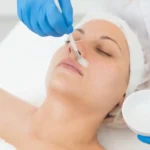THE WHAT? L’Occitane has reported a 11.4 percent net sales growth for Q2, up 7 percent on pre pandemic levels in Q2 2020.
THE DETAILS The group reported 18.6 percent growth at constant rates in the six months ended 30 September 2021. This was driven by core brands L’Occitane en Provence, Elemis and Others.
According to a press release the company saw a strong recovery in offline wholesale channels in Q2, especially travel retail in Asia.
The company said, “As stores reopened globally, same store sales improved and grew 11.9% in FY2022 H1. Still, the Group’s online channels remained robust, showing growth of 11.6% in FY2022 Q2 following an outstanding growth of 64.6% in FY2021 Q2.”
For the first half, all key markets, with the exception of Taiwan, continued to show improvement and posted strong growth. Brazil, Hong Kong – driven by the travel retail channel – Russia and China grew 81.3, 64.2, 45.2 and 23.2 percent at constant rates respectively.
China continued to contribute the most to overall growth in FY2022 Q2, thanks to dynamic online and offline sales.
THE WHY? L’Occitane attributed the growth to the company’s ongoing restructure.
Group Chairman and Executive Director Reinold Geiger says, “It is pleasing to see our growth momentum continue into the second quarter of FY2022 as more and more major markets move on from the COVID-19 pandemic. This recovery coincides with the completion of our global restructure and the evolution of our leadership team. I would like to congratulate André on his recent appointment. I have full confidence that his passion, drive and wide-ranging experience in the retail and distribution of cosmetic products will further drive the Group’s future growth.”
New CEO André Hoffmann continued, “As consumers around the world rediscover the joy of in-store shopping, the fact that we saw nice double-digit growth in online sales in the second quarter once again illustrates the robustness of our omni-channel distribution strategy. We will continue to target our investments in a way that fully leverages the unique appeal of our different brands, as we head into the holiday season with enthusiasm.”
Aesthetic medicine products are developed and regulated to meet stringent safety and efficacy standards. They are typically administered by trained healthcare professionals such as dermatologists, plastic surgeons, and specialized nurses in clinical settings. These products aim to provide effective solutions for cosmetic enhancement, skin rejuvenation, and overall aesthetic improvement, contributing to both physical appearance and self-confidence.
Key categories of aesthetic medicine products include:
-
Injectables: This category includes products such as dermal fillers, botulinum toxins (e.g., Botox), and collagen stimulators. These injectables are used to smooth wrinkles, add volume, and improve facial contours.
-
Skin Rejuvenation Treatments: Products like chemical peels, microdermabrasion systems, and laser devices are used to improve skin texture, reduce pigmentation irregularities, and enhance overall skin tone.
-
Skincare Products: These include medical-grade cleansers, moisturizers, serums, and topical treatments containing active ingredients like retinoids, antioxidants, and growth factors. They are formulated to address specific skin concerns such as acne, aging, and hyperpigmentation.
-
Hair Restoration Products: Medical treatments and products designed to promote hair growth and treat conditions such as male and female pattern baldness.
-
Body Contouring and Fat Reduction: Devices and products used for non-surgical body sculpting, such as cryolipolysis (cool sculpting) devices and injectable lipolytics.
-
Cosmeceuticals: High-performance skincare products that bridge the gap between cosmetics and pharmaceuticals, often containing potent ingredients with proven clinical benefits.
-
Wound Care and Scar Management: Products like silicone sheets, gels, and advanced wound dressings used to improve healing and reduce the appearance of scars.



